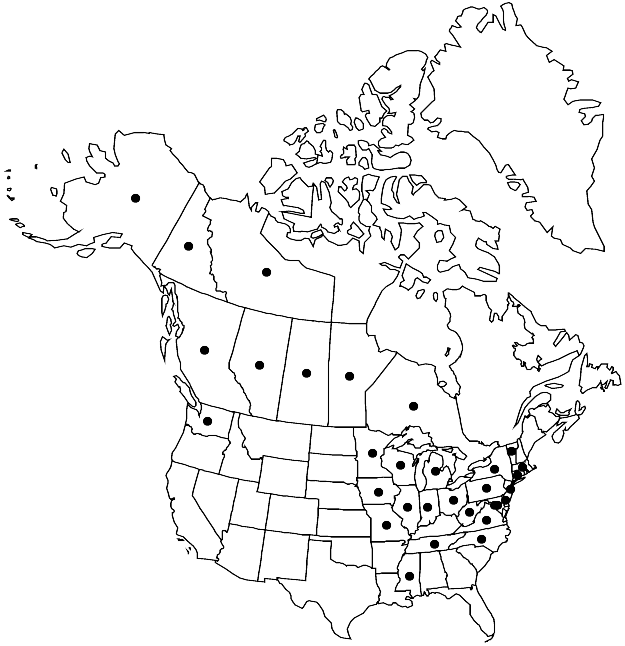Difference between revisions of "Arabidopsis lyrata"
Novon 7: 325. 1997.
imported>Volume Importer |
RevisionBot (talk | contribs) m (Bot: Adding category Revised Since Print) |
||
| (2 intermediate revisions by 2 users not shown) | |||
| Line 74: | Line 74: | ||
|publication year=1997 | |publication year=1997 | ||
|special status= | |special status= | ||
| − | |source xml=https:// | + | |source xml=https://bitbucket.org/aafc-mbb/fna-data-curation/src/2e0870ddd59836b60bcf96646a41e87ea5a5943a/coarse_grained_fna_xml/V7/V7_681.xml |
|tribe=Brassicaceae tribe Camelineae | |tribe=Brassicaceae tribe Camelineae | ||
|genus=Arabidopsis | |genus=Arabidopsis | ||
| Line 80: | Line 80: | ||
}}<!-- | }}<!-- | ||
| − | -->[[Category:Treatment]][[Category:Arabidopsis]] | + | --> |
| + | |||
| + | [[Category:Treatment]] | ||
| + | [[Category:Arabidopsis]] | ||
| + | [[Category:Revised Since Print]] | ||
Latest revision as of 17:13, 6 November 2020
Biennials or perennials; (caudex branched or not, sometimes root crown present); glabrous or pubescent, trichomes simple, with stellate, forked, and rayed ones. Stems simple or few to several from base, erect or decumbent, usually branched distally, 0.5–5 dm, pubescent basally, trichomes mixed simple, 1-forked, and (fewer) stellate ones, rarely 3-rayed, glabrous or pubescent apically. Basal leaves: petiole 0.5–6 cm; blade oblanceolate or ovate, 0.5–8.5 cm × 2–18 mm, margins entire, dentate, or lyrate-pinnatifid (when lobed, terminal lobes larger than lateral), apex obtuse, surfaces glabrous or sparsely to densely pubescent. Cauline leaves shortly petiolate or sessile; blade oblanceolate, 0.4–4.2 cm × 1–8(–10) mm (smaller distally), margins usually entire, repand, or obscurely toothed, rarely lobed. Fruiting pedicels divaricate or ascending, 2–15 mm. Flowers: sepals 2–4.5 mm, lateral pair saccate basally, (glabrous or densely pubescent); petals white or purplish, spatulate or obovate, 4–10 × 1.5–4 mm, (claw to 2 mm, toothless); filaments 2–4 mm. Fruits torulose, flattened, (1.5–)2–4.5 cm × 0.8–1.8 mm; valves each with distinct midvein; ovules 24–46 per ovary; style 0–1 mm. Seeds light brown, (flattened), oblong, 0.8–1.4 mm; cotyledons accumbent.
Distribution

Alta., B.C., Man., N.W.T., Ont., Sask., Yukon, Alaska, Conn., D.C., Del., Ill., Ind., Iowa, Mass., Md., Mich., Minn., Miss., Mo., N.C., N.J., N.Y., Ohio, Pa., Tenn., Va., Vt., W.Va., Wash., Wis., n Europe, n, e Asia.
Discussion
Subspecies 3 (3 in the flora).
Arabidopsis lyrata and its infraspecific taxa recognized below were treated in Arabis by R. C. Rollins (1993) and G. A. Mulligan (1996). As shown by S. L. O’Kane and I. A. Al-Shehbaz (1997, 2003), the two genera are relatively distantly related and A. lyrata should be placed in Arabidopsis with the rest of its relatives.
Arabidopsis lyrata is highly variable. It has been divided (see synonymy below) into independent species. The three subspecies recognized here are rather difficult to separate, especially where their ranges overlap. Cytological data are not helpful; both diploid and tetraploid populations have been reported for each of the three subspecies.
Selected References
None.
Lower Taxa
Key
| 1 | Basal leaf blade margins entire or toothed; caudices well-developed, often branched, somewhat thickened. | Arabidopsis lyrata subsp. petraea |
| 1 | Basal leaf blade margins lyrate or lyrate-pinnatifid; caudices often slender, unbranched, or with a root crown | > 2 |
| 2 | Basal leaf blade surfaces usually pubescent; petioles often hirsute; petals 6-8 mm; fruits 0.8-1 mm wide; styles 0.5-1 mm. | Arabidopsis lyrata subsp. lyrata |
| 2 | Basal leaf blade surfaces glabrous or sparsely pubescent; petioles often glabrous; petals (4-) 5-5.5(-6) mm; fruits 1.2-1.5(-1.8) mm wide; styles 0-0.5 mm. | Arabidopsis lyrata subsp. kamchatica |